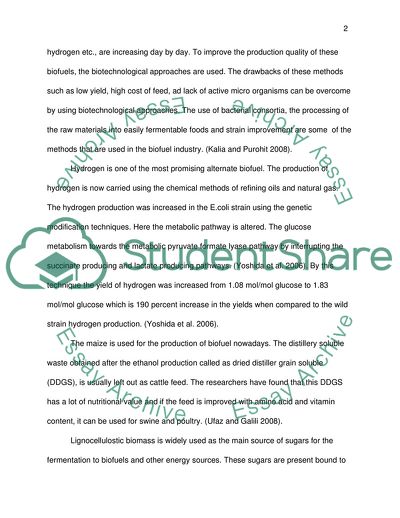Cite this document
(Biotechnological Advancements Assignment Example | Topics and Well Written Essays - 2000 words - 1, n.d.)
Biotechnological Advancements Assignment Example | Topics and Well Written Essays - 2000 words - 1. https://studentshare.org/biology/1751225-recent-biotechnological-approaches-that-have-been-used-to-enhance-the-yield-and-diversity-of-amino-acids-vitamins-antibiotics-and-biofuels
Biotechnological Advancements Assignment Example | Topics and Well Written Essays - 2000 words - 1. https://studentshare.org/biology/1751225-recent-biotechnological-approaches-that-have-been-used-to-enhance-the-yield-and-diversity-of-amino-acids-vitamins-antibiotics-and-biofuels
(Biotechnological Advancements Assignment Example | Topics and Well Written Essays - 2000 Words - 1)
Biotechnological Advancements Assignment Example | Topics and Well Written Essays - 2000 Words - 1. https://studentshare.org/biology/1751225-recent-biotechnological-approaches-that-have-been-used-to-enhance-the-yield-and-diversity-of-amino-acids-vitamins-antibiotics-and-biofuels.
Biotechnological Advancements Assignment Example | Topics and Well Written Essays - 2000 Words - 1. https://studentshare.org/biology/1751225-recent-biotechnological-approaches-that-have-been-used-to-enhance-the-yield-and-diversity-of-amino-acids-vitamins-antibiotics-and-biofuels.
“Biotechnological Advancements Assignment Example | Topics and Well Written Essays - 2000 Words - 1”. https://studentshare.org/biology/1751225-recent-biotechnological-approaches-that-have-been-used-to-enhance-the-yield-and-diversity-of-amino-acids-vitamins-antibiotics-and-biofuels.


